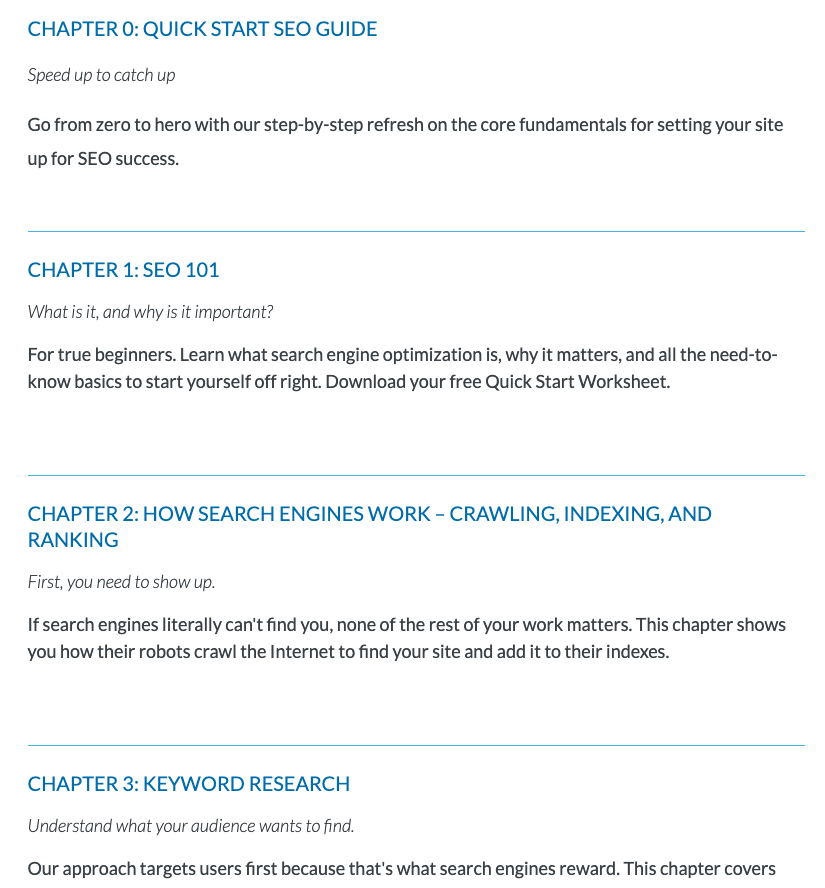Table of Contents
When I was learning judo, I would always signpost, and as a result, lost a lot of matches I shouldn’t have. Signposting is when you essentially show your hand and demonstrate what you’re going to do before you do it. In judo, it was removing my hands from my opponent's jacket before I was ready to make a big move. This is a terrible thing to do in sports for the exact reason it’s a brilliant thing to do in SEO and digital marketing.
Making things as easy as possible to understand for users and robots is the core of the industry. The proof is in the market leaders: Signposting is a key strategy for companies like Hubspot and Moz. In this post, I'll explain why this strategy helps your user navigate your site easily and contributes to your hub and spoke model.
What Is a Signpost Article?
A signpost article is a hub-type article that features links related to the headline.
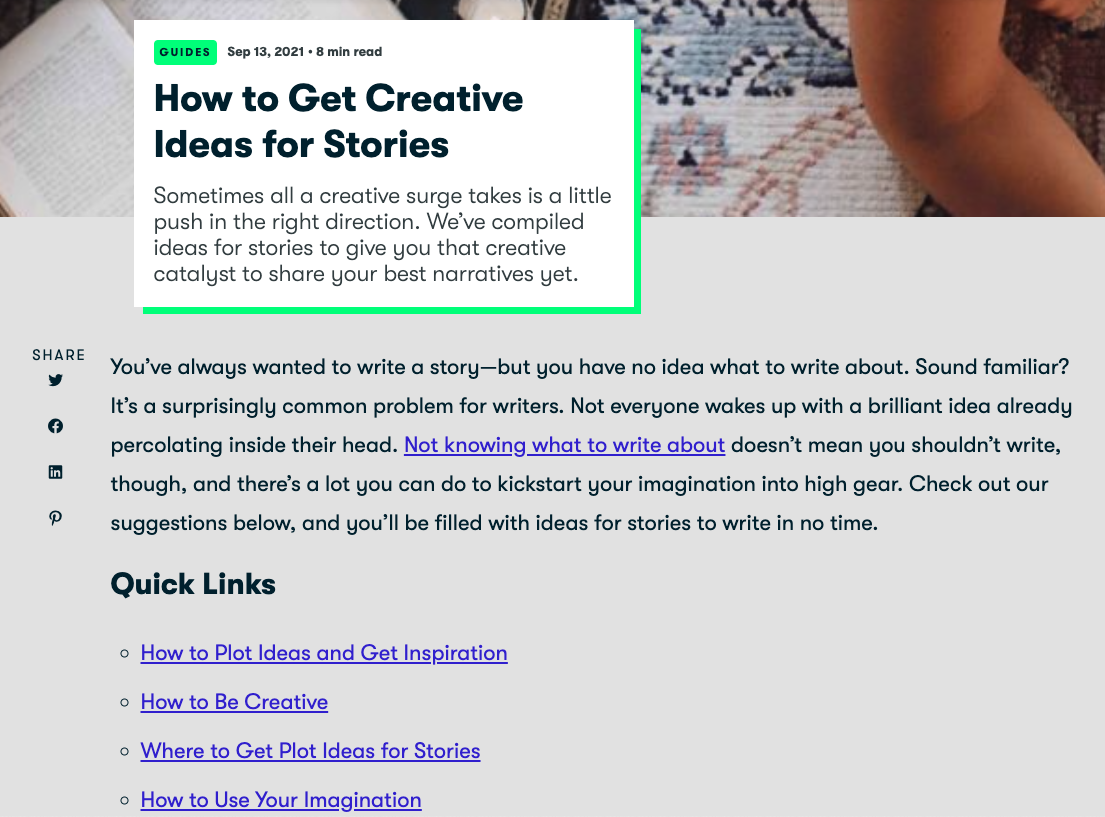
An example signpost article from the Skillshare blog
Much like a real life signpost, these articles show users the outline of a topic or concept. Unlike articles that link out contextually using related keywords to products or service pages that are relevant, these articles link out to related articles and further learning. They’re top of funnel and encourage users to dive deeper into the topic and get more acquainted with your brand and your unique voice.
These articles can come in many forms, but the most common form I see is the “book” format. The “book” format separates the articles in the signpost into “chapters” and gives each “chapter” a blurb that describes what the user is going to learn. This is especially present in software companies related to emerging technologies and industries (like SEO) and can be very useful in the onboarding process.
Another form signpost articles take is the “ultimate guide”. Often “ultimate guides” are not ultimate, and are added to and improved over time. These guides link out in each section to further reading or related documentation to expand on ideas in the article. Many ultimate guides will have a suite of articles per section to “expand” on the concepts entertained in the paragraph above. These sections are intended to help the user move through the funnel.
Examples of signposting articles
OK that all sounds really vague, so let’s put some examples to it.
Moz
A fantastic example of signposting articles comes from Moz. Their content ranks, and it creates a curriculum-like format for all levels of SEO expert. The best example of this is their Beginner’s Guide to SEO.
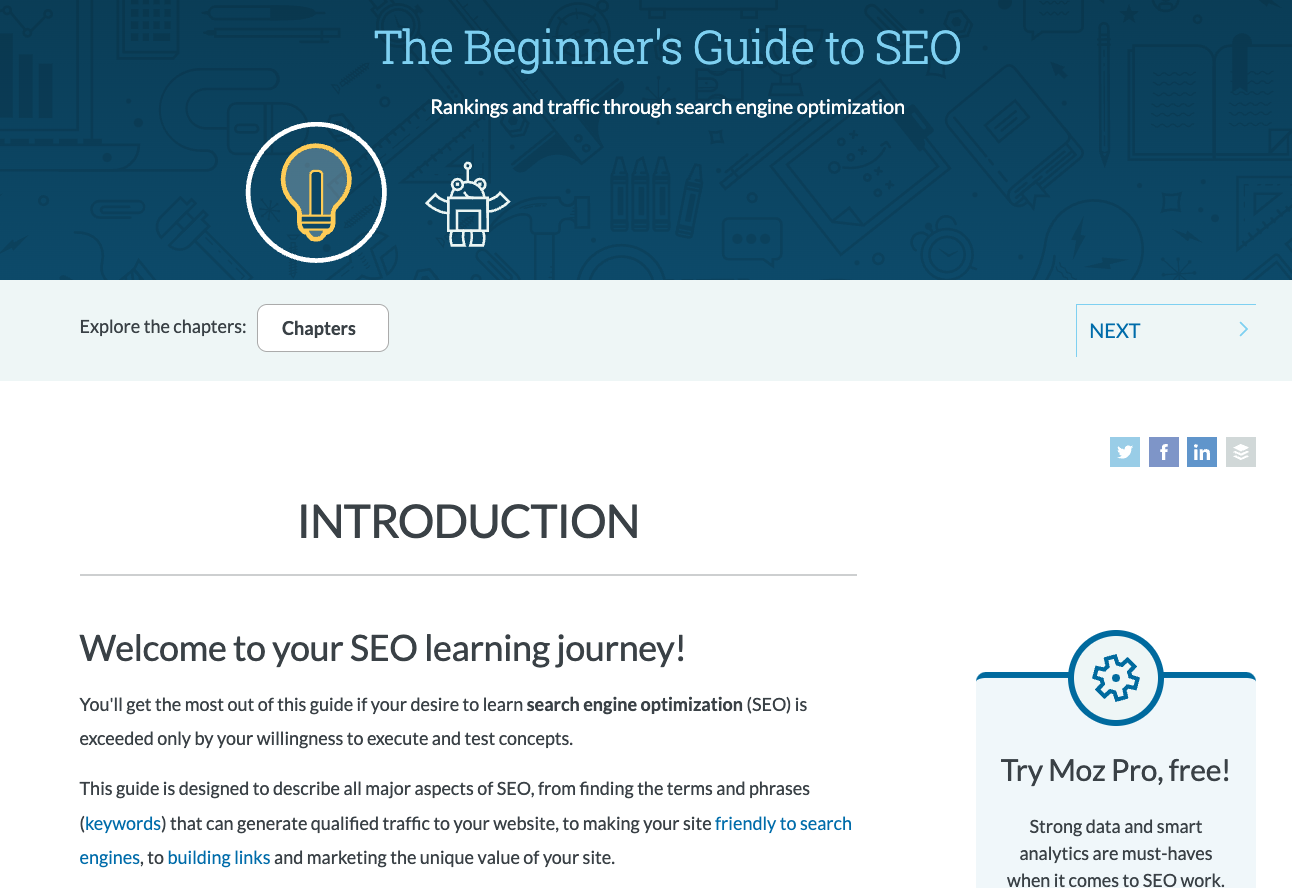
With two formats of internal linking, this post’s goal is to get you further into the site to learn more. The introduction and selection of content under each “chapter” creates value for search engines to find and rank this page. The reciprocal linking between this page and the other chapter pages allows authority to flow through the hub and spoke model. This improves this section of the site organically and makes the signpost page a linkable asset.
Is it working for them?
Moz’s Beginner’s Guide to SEO page ranks second for “SEO” behind Google itself, and is the top performing page on the Moz site (according to ahrefs), driving 11% of all traffic to the site. I’d give this page a big ol’ green tick.

Hubspot
The creators of the hub and spoke model have done it again with signpost articles spread across their site. The best example of signpost articles on Hubspot are the Learning Path hubs. We’ll be looking specifically at the email marketing page here.
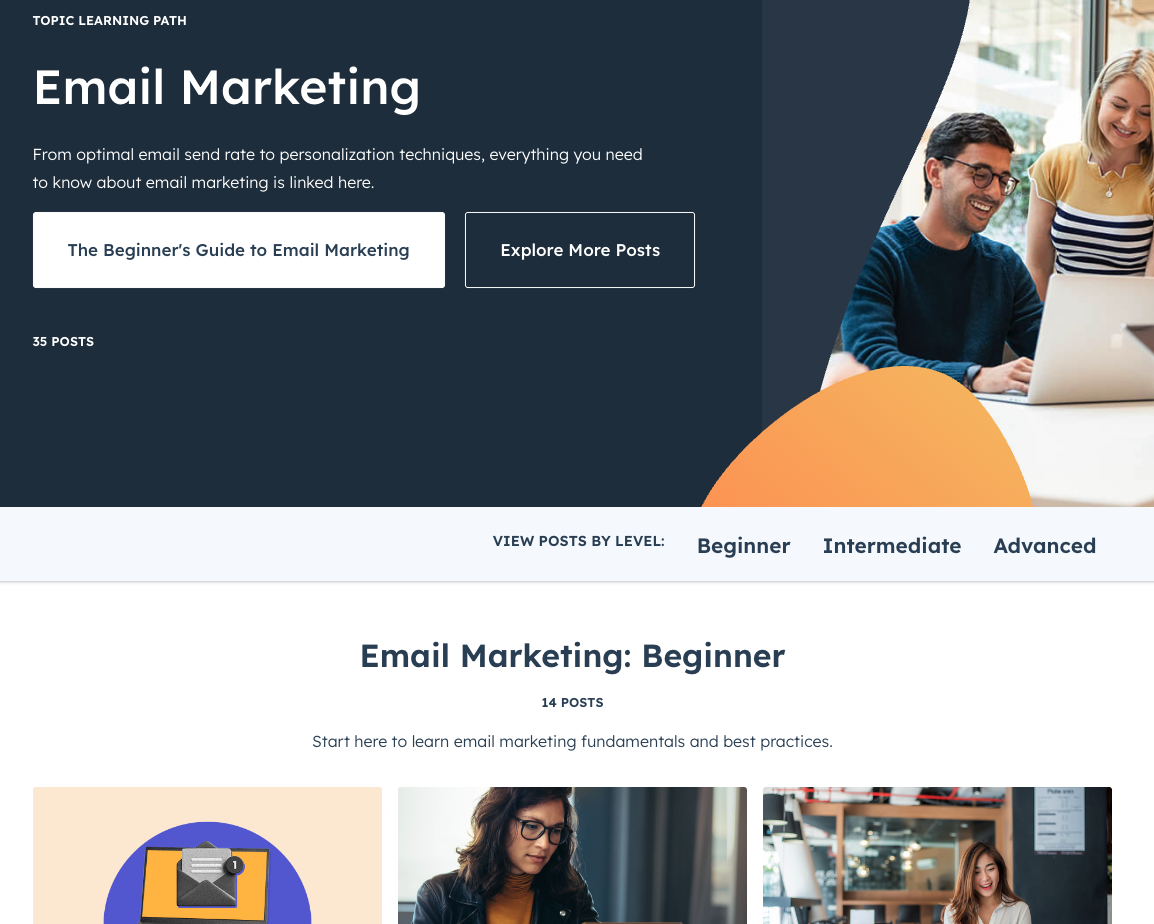
Three features I like about this signpost article include:
- The key Call to Actions throughout the content. These help users who are looking for something specific, like a tool or template, to exit the funnel efficiently.
- The sub-headings and number of posts under each section. These small pieces of text help users find the information they are looking for quickly and easily.
- The immediate Call to Action at the top of the page, to start with the “beginners guide”. This encourages users to take the course from start to finish.
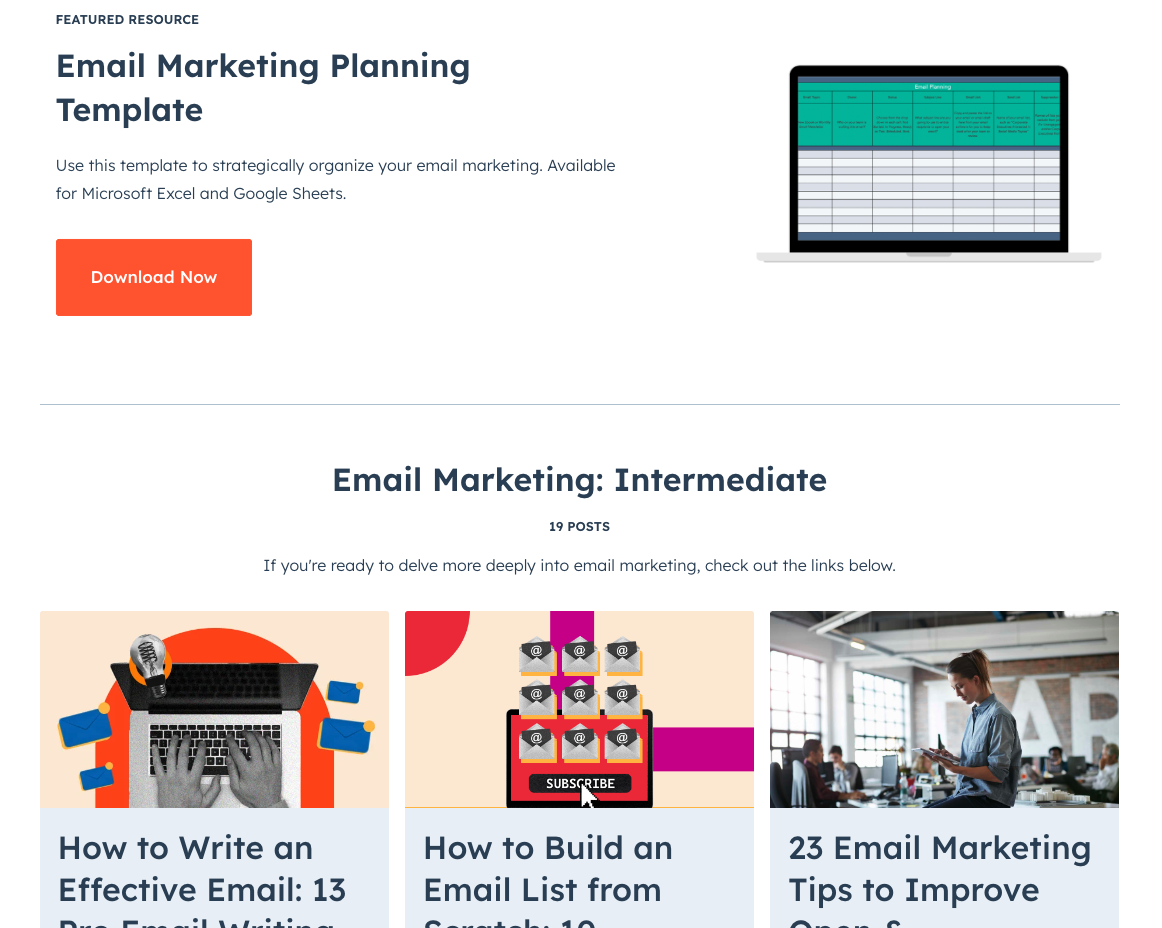
Is it working for them?
A relatively new section of the site, the learning path blogs on Hubspot are improving over time and are beginning to gain momentum on the site. Let’s call this one an orange tick and a work in progress.
Salesforce
Salesforce’s help documentation is second to none. Help sections are great examples of signpost articles, and can help users at all stages of the funnel.
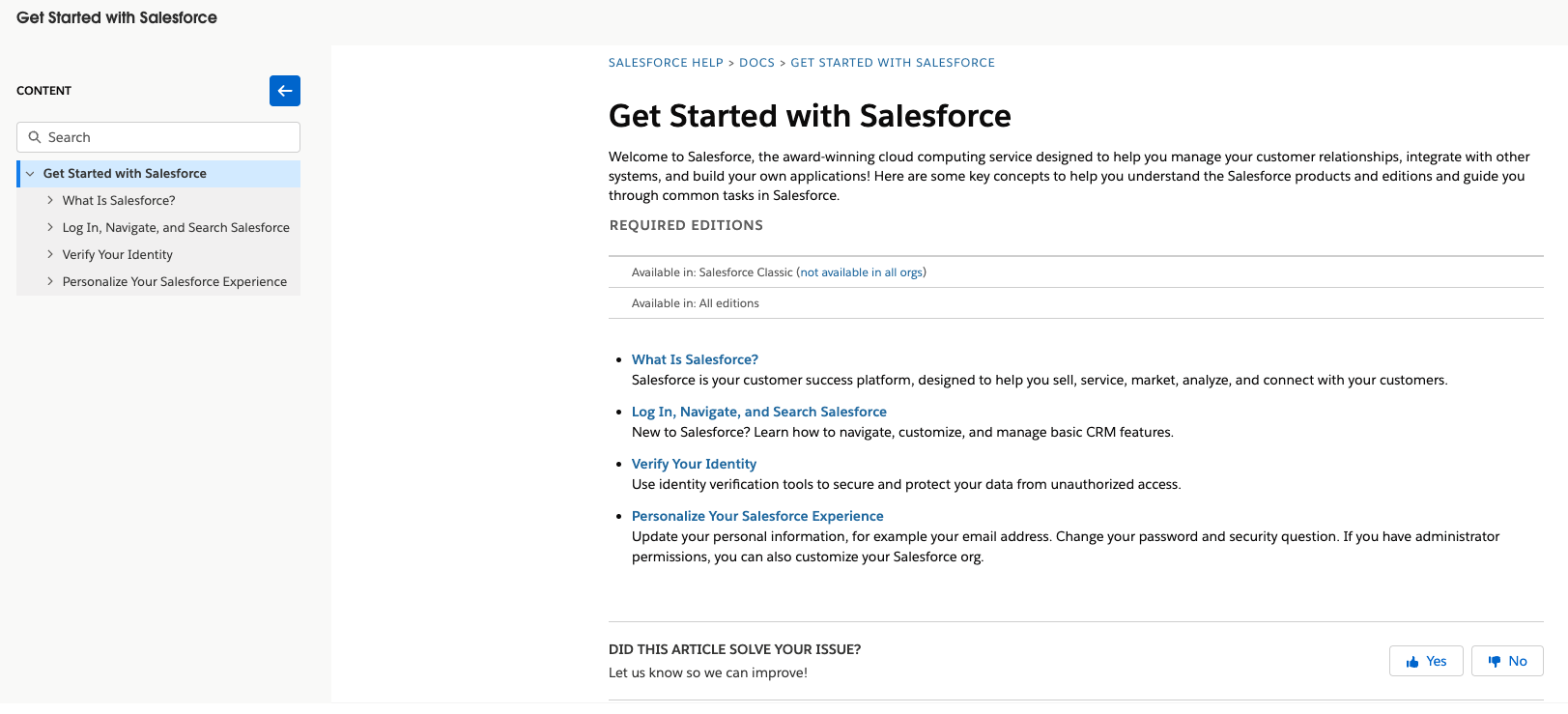
These help hubs are great at directing users to what they need and can get quite specific without any customer service representatives or customization. I love this format for all the reasons above, as well as the search function. If the goal of signpost articles is to both increase internal linking and make it easier for users to find information, a search bar and sub-categories to click through achieve these very well.
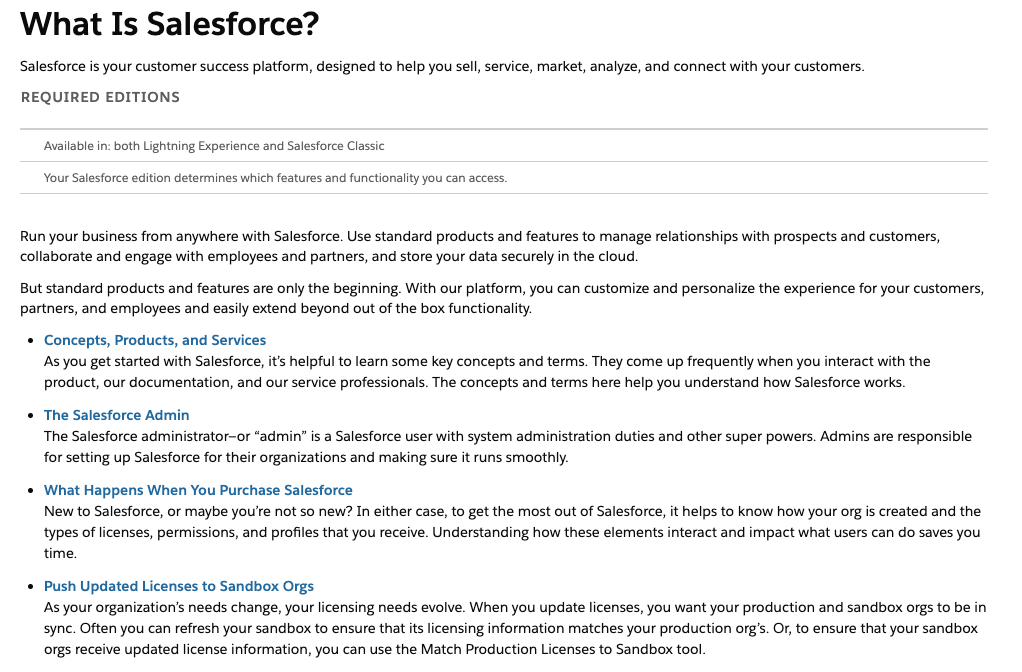
Skillshare
The popular learning website Skillshare crushes the brief on signposting articles. We’ll look at their article on TikTok.
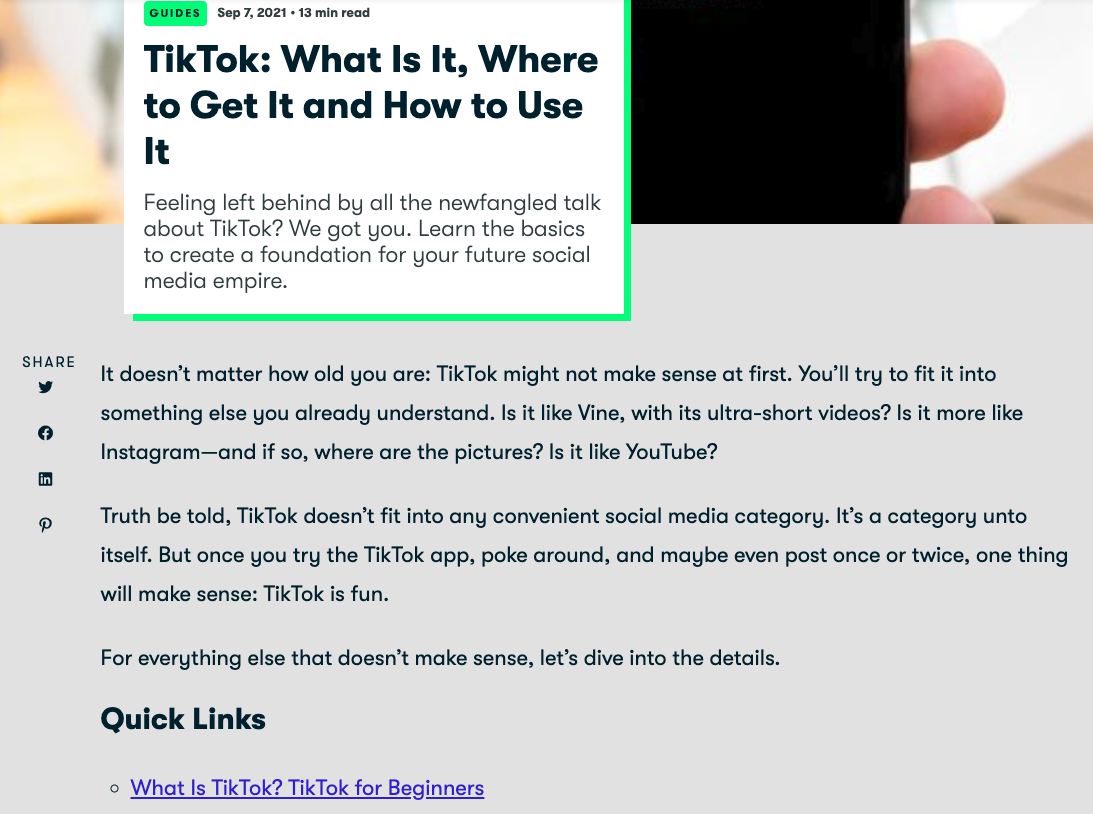
Linking out to courses and follow-up guides and linking to this signpost page from these resources creates a strong hub that can help these sections rank well for selected keywords. In these signpost articles, I enjoy the deep links to courses that are related directly and indirectly to the topic, as well as follow up blog articles that are explicitly related to the topic at hand. The diversity of the linking field is perfect for this kind of site.
Is it working for them?
Skillshare’s signpost blog content drives substantial traffic to the site (according to ahrefs), and has shown growth in traffic and keywords. Another green tick from me!
What types of companies should consider this article format?
Like all types of content, signpost articles may not be right for your business model and can create more work for your user rather than less. Here are 5 types of companies that should consider incorporating signpost articles into their content strategy.
Software companies
Software and SaaS companies are the perfect candidate for signpost articles. Not only do they have to educate their customers on how to use their product, but they should share their opinions on the current state of their industry. Some example signpost articles for software companies include:
- How to use our software
- How to integrate our software
- Building our software into your processes
Companies with novel technologies
Companies that use new technologies or proprietary tech should also consider using signpost articles to educate their consumer on the tech in their product and how their product stacks up against the current industry standard. Some examples of potential signpost articles for new tech include:
- How our tech compares to others
- Using our tech in your daily life
- How our tech is made
E-commerce Retailers
E-commerce companies that publish top of funnel content regularly are great for signpost content. Often, e-commerce companies use content as a relationship-building tool that works to push people to bottom of funnel pages to convert. Signpost content can aid the transition from top of funnel to bottom of funnel by creating guides or complete indexes for users to read information in a way that helps conversion. This is also a great way of categorizing blog content for e-commerce sites, where wildcard content is used. Some examples of signpost articles for e-commerce include:
- 10 ways to use our product
- How to use our product every day
Educational companies
Businesses that revolve around education and creating content purely for educational purposes are perfect for signpost articles. Segmenting your education resources into different, relevant sections can enable your users to progress through their courses and explore other types of courses and material. Some examples of signpost articles for educational companies include:
- Basics of topic
- Mastering the topic
Companies in an industry that requires a steep learning curve
Companies like Moz and Hubspot are great examples of companies that cater to niche industries that have a steep learning curve (SEO and content strategy respectively). These companies need educational resources to train the next generation of practitioners and to engage them with their tools and processes, effectively ensuring their authority in the industry and their longevity. Some great examples for these companies include:
- Beginners guide to the topic
- Mastering niche aspects of the topic
Companies that publish large quantities of posts
Companies that publish often and in large amounts are great for signpost articles purely because of the volume of content. Organizing content in a way that makes sense for users and robots will help these visitors move through the site in a way that enhances their understanding of the business at large. Some examples of signpost articles for these companies include:
- Our top 10 articles on topic
- Mastering topic
With that all said - Do they work?
Do signpost articles truly work? Theoretically, they should! Based on things we know about SEO, here are some ways signpost articles can improve your performance:
- SIgnpost articles promote internal linking and the hub and spoke format
- Signpost articles are linkable assets when done correctly and can encourage things like bookmarking, bringing overall trust of the site up
- Signpost articles are a great way to encourage return visitors
- Acting as a hub, signpost articles can reduce instances of cannibalization and link articles together, giving more context to your site.
So… Should You Try Out Signpost Articles?
The answer is yes! The least you can do is try them out, especially if you have an existing suite of content to play around with. If you’re using a traditional hub and spoke model, you’ve already got the bones of a strong signpost article format.
